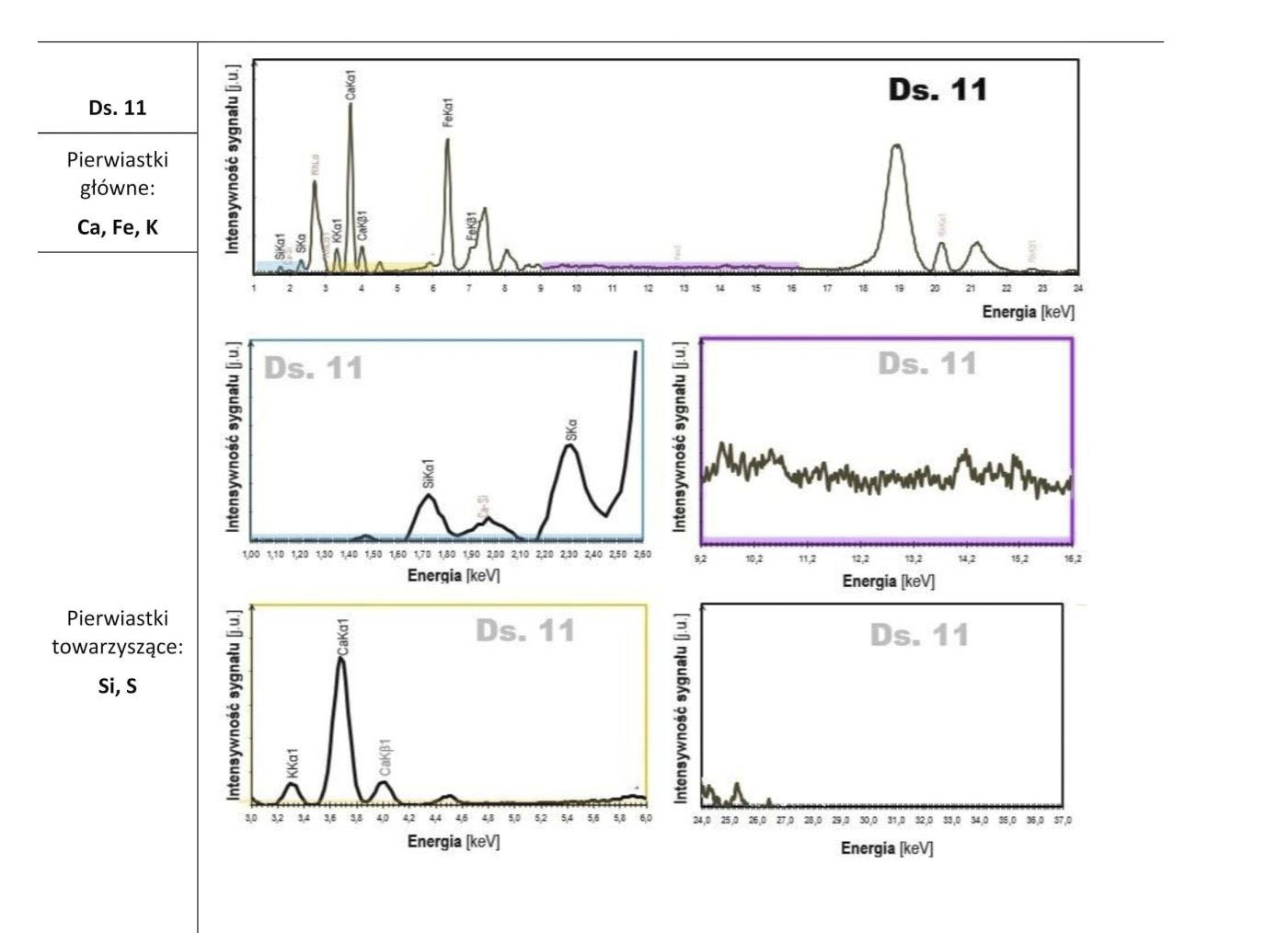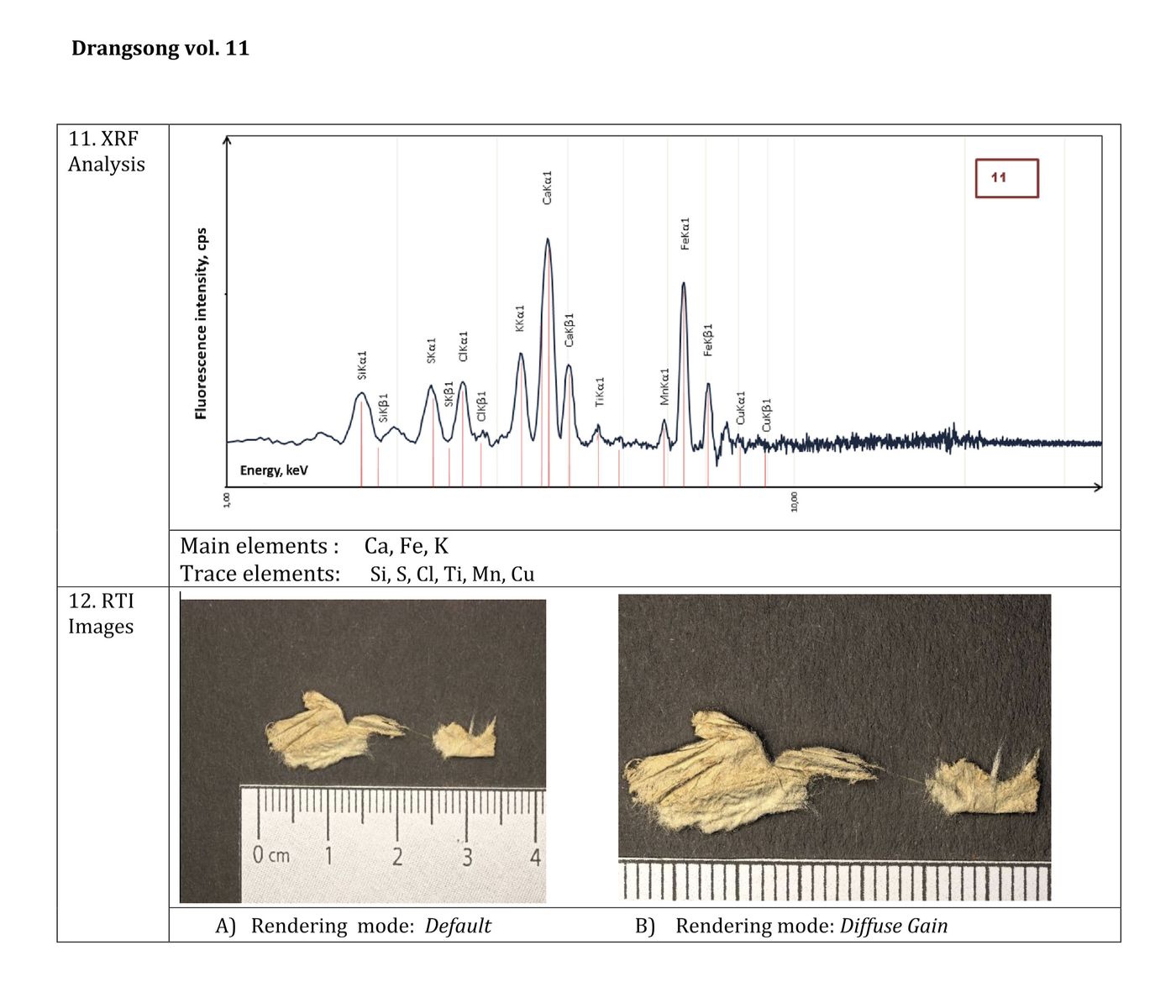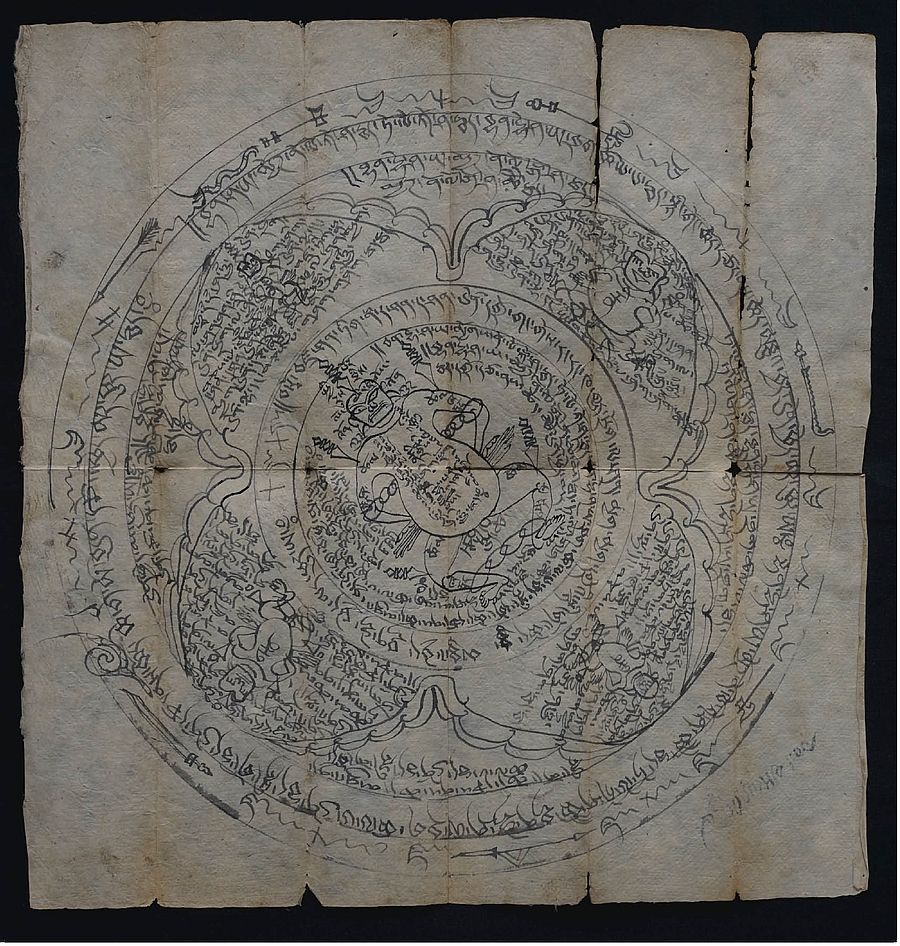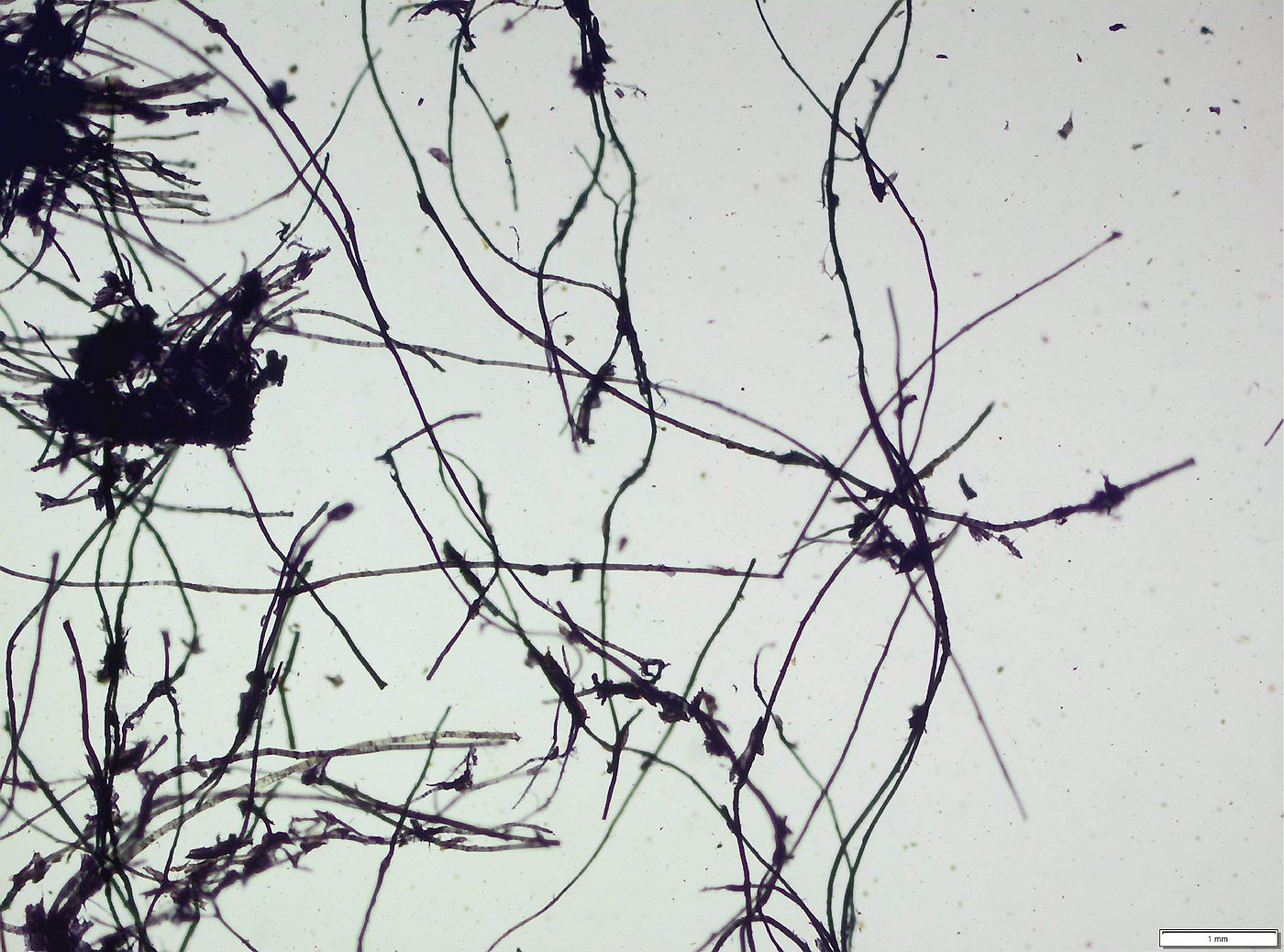DRANGSONG MANUSCRIPTS
|
1. Text number
|
Drangsong 011 |
|
2. Text title (where present) in Tibetan |
No title |
|
3. Text title (where present) in Wylie transliteration |
None |
|
4. A brief summary of the item’s contents |
Amulet to ensure the protection of the Bon tantric deity sTag la me ’bar against being killed (bsad pa’i ’khor lo) |
|
5. Number of folios |
1 |
|
6. Scribe’s name |
None |
|
7. Translation of title |
None |
|
8. Transcription of colophon |
None |
|
9. Translation of colophon |
None |
|
10. General remarks |
|
|
11. Remarks on script |
’bru tsha, ’khyug ma tshugs; some dbu can for mantras |
|
12. Format |
Single sheet |
|
13. Size |
40.5 × 39.5 |
|
14. Layout |
The diagram of a cakra centrally composed in a circle. |
|
15. Illustrations and decorations |
This square piece of paper is drawn and inscribed with the exemplary diagram of a cakra (Tib. srung ’khor, understood as both a throwing disk and a protection circle) centred on an effigy known to the Tibetans as a liṅga. It was folded twice into a square of half the former’s size, and then twice into a small rectangular format, possibly so as to be stored between the folios of a manuscript. Interestingly, the cakra is not orientated following the sides of the square but its corners, which contrast to the other cakra in the collection. This may relate to the practice of folding the cakra along the joints of the effigy’s limbs so as to ritually break them.[1] On the back, an inscription names it gsad ling, or ‘the killed effigy’.[2] The liṅga at the centre of the circle has the shape of a pot-bellied man seen frontally standing or lying on his back with his elbows and knees flexed to nearly right angles and his hands placed behind his loins. This position would derive from the Alexandrian tradition of anatomical science. In the Tibetan context, however, the medical imagery was transformed into the support of sorcery rituals through which to destroy one’s enemies.[3] In this case, the identification of the effigy as a man is conveyed by the inscription of the syllable rni (for nṛī) on his chest, while inscriptions on top of his head and on his belly call for specifying his clan name and personal name in order to operate the association of the effigy with the enemy to be restrained and destroyed.[4] Chains are tied to his arms and legs, and ritual stakes known as phur pa pinned down on his head, shoulders, and knees. Captions linked to his eyes, ears, and mouth by dotted lines indicate that he is blinded, deafened, and mute,[5] while others written on his limbs add that he is crippled,[6] and a final one below his genitals probably that he is sterile.[7] A short destructive mantra is written on his upper body, turning around his navel, and another, longer one surrounds him. The intermediate circle separating the effigy at the centre of the cakra from the latter’s four blades is inscribed with a third destructive mantra and two ‘X’ marks combined with the syllable rdza, which may indicate that the enemy was effectively separated from his protector deities and his life-force cut-off, according to the mantra’s purpose.[8] Outside this circle, the four petal-like blades of the cakra are drawn with as many human effigies identical to the main one except for their smaller dimensions and lack of details, which may represent the retinue or family members of the enemy. A fourth destructive mantra is written besides the effigies, while the mantra surrounding the main effigy is repeated in between the four blades, and once again at their periphery. Finally, the cakra is surrounded by a protective circle including numerous weapons, and stylized ‘X’ marks and rdza syllables carrying the same meaning as around the main effigy. [1] See Bryan J. Cuevas, ‘Illustrations of Human Effigies in Tibetan Ritual Texts: With Remarks on Specific Anatomical Figures and Their Possible Iconographic Source’, Journal of the Royal Asiatic Society 21, no. 1 (2011): 77. [2] It reads: @@/ gsad ling yin kris /. [3] See Cuevas, ‘Illustrations of Human Effigies in Tibetan Ritual Texts’, 83–95. [4] The inscriptions read: spyi bor rus bris ; ming bris ; shig srog lte par bla bdag bris [5] The captions read: long ; ’on ; kugs. [6] The inscriptions read: chol or chom ; zha ; rbud. [7] The inscription reads: rtsa rgyud chod. [8] This part of the mantra reads: dgro’i (for dgra bo’i) snying gong chod. On such X-marks, see Cuevas, ‘Illustrations of Human Effigies in Tibetan Ritual Texts’, 77. |
|
16. Paper type |
Woven, 1 layer |
|
17. Paper thickness |
0.11–0.15 |
|
18. Nos of folio sampled |
f. 1, right edge |
|
19. Fibre analysis |
Daphne sp. |
|
20. AMS 14C dating |
|
|
21. XRF analysis |
Main elements: Ca, Fe, K Trace elements: Si, S, Cl, Ti, Mn, Cu |
|
22. RTI |
A) Rendering mode: Default B) Rendering mode: Diffuse Gain |
|
23. GCMS |





